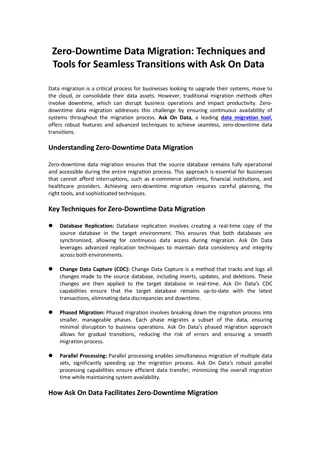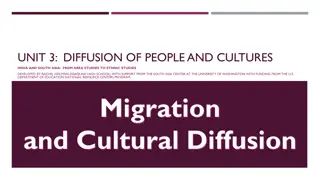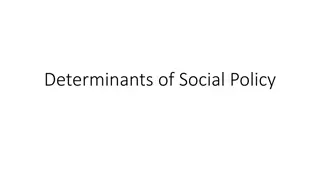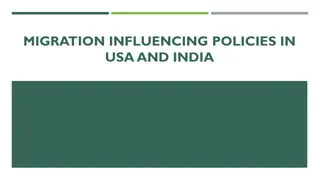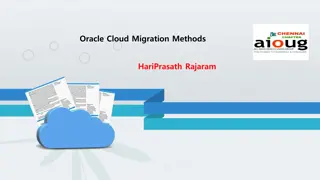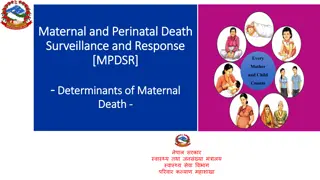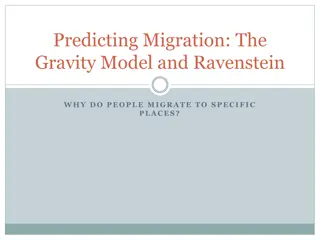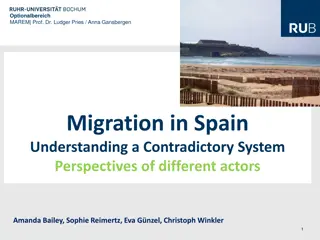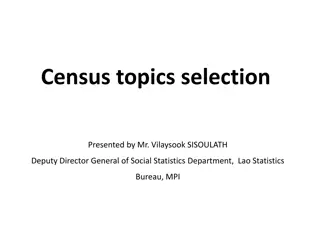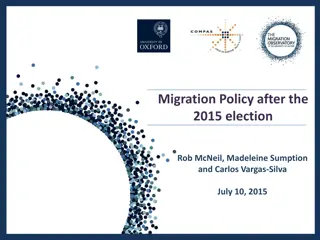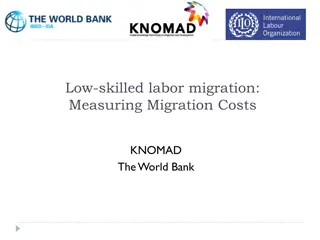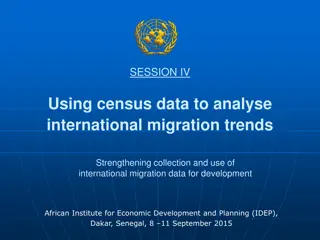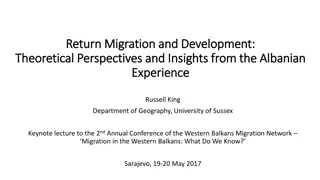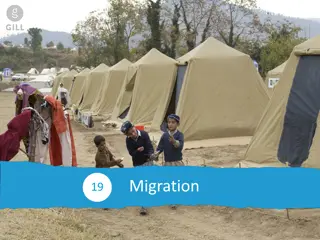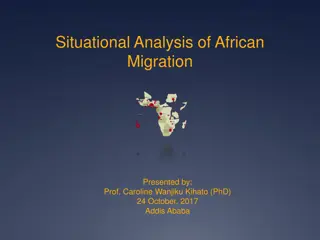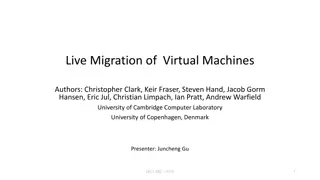Determinants of Migration
Migration plays a crucial role in geographical population change, impacting areas of origin, destination, and migrants themselves. Factors such as economic, social, and demographic determinants influence the movement of populations, with push and pull factors operating simultaneously in various regions. The complex nature of migration reflects societal changes, industrialization, technological advancements, and other stimuli shaping population movements.
Download Presentation

Please find below an Image/Link to download the presentation.
The content on the website is provided AS IS for your information and personal use only. It may not be sold, licensed, or shared on other websites without obtaining consent from the author.If you encounter any issues during the download, it is possible that the publisher has removed the file from their server.
You are allowed to download the files provided on this website for personal or commercial use, subject to the condition that they are used lawfully. All files are the property of their respective owners.
The content on the website is provided AS IS for your information and personal use only. It may not be sold, licensed, or shared on other websites without obtaining consent from the author.
E N D
Presentation Transcript
Migration : Concept Migration, like fertility and mortality, holds a place of prominence in a geographical analysis of population change in any area. Migration cannot be considered a mere shift of people from one place of residence to another, as it is most fundamental to the understanding of continuously changing space-content and space-relationship of an area. For geographers, it is not merely a reallocation of human resources but is a process, which has a three fold impact: On the area experiencing in-migration; On the area experiencing out-migration; and On the migrants themselves. i. ii. iii. Whenever migration takes place, in whatever form, it modifies the area of origin, the area of destination as well as the way of life of the migrants. Beaujeu-Garnier (1966) and Smith (1960) rightly remarked that area from which people out- migrate, the area to which they in-migrate and the migrants themselves never remain the same.
Migration : Determinants Migration is a complex phenomenon and an enquiry about the motives behind it is the most difficult part of the analysis of the process of migration. With regard to the determinants of migration of population, distinction has been made between push factors and pull factors. Push factors are those that operate in areas of outmigration and compel the people to move to other areas. Pull factors are those that operate in areas of in-migration and attract the people to these areas. It is not necessary that in an area only push or only pull factors should operate. In fact, both push and pull factors operate simultaneously in the same area. It is because of this that sometimes becomes difficult to differentiate between push and pull factors. It is in this context that a scheme other than the push-pull syndrome has to be recommended for a detailed inventory of determinants of migration. All migration in the modern context are borne out of growing process of industrialization, technological advancement and other changes that are taking place in the social and economic spheres. In addition, wars, political events, regional disparities in natural increase, in employment potentials, in wages and in availability of agricultural land are other stimuli for population movements.
There are several factors in an area that hold the people of the area to it or attract more people to it and there are innumerable factors that repel the people from it. The determinants of migration for the convenience of understanding may be classified into three broad categories of - A. Economic, B. Social and C. Demographic determinants.
A. Economic Determinants Economic motives constitute the most vital determinants of population movement. Included among the various economic determinants which govern the magnitude and direction of migration are the general economic conditions of the area, the availability of good agricultural land, size of landholdings, the rate of growth of employment opportunities, etc. The depressed economic conditions in an area generate tendencies of out-migration, whereas the conditions reflecting the economic prosperity offer greater employment potential and attract in-migrants. Within the general framework, the industrial pull has proved to be more dynamic than the agricultural push, both in industrial and agricultural countries. The availability of good agricultural land continues to be most powerful economic factor determining magnitude and direction of population migration. The areas which have acute pressure of population upon their limited agricultural land resource base, thus, generate out-migration, whereas those where new agricultural lands are reclaimed receive such migrants. Availability of employment opportunities is the next important factor. The areas that are experiencing developmental activities are widening their employment potential. This has proved to be a powerful economic factor governing population movement. The development of means of transportation and communication in recent times has also stimulated migratory tendencies.
B. Social Determinants Equally significant are the socially rooted determinants of migration. There are certain social customs that generate specific type of migration. For instance, females move from the place of their parent s residence to the place of residence of their spouses at the time of marriage. This is a type of migration, which owes nothing to the desire of economic gains. It is due to this factor that in India the number of female migrants is considerably high, although Indian population is considered as least mobile. Other social factors controlling population include socio-economic status, information network, cultural contact, desire for social upliftment and government policies. The socio-economic status of the potential migrant has been considered as an important factor in determining the magnitude and direction of migration. For instance, in a society like that of the nineteenth century Britain, people having lower social status were the most mobile. There are evidences to prove that in India also the people with low social-economic status are more mobile because they have no landed property to tie them in their native places.
C. Demographic Determinants A number of demographic factors also play a determining role in the migration-propensity spectrum. For instance, age has been recognised as one of the important demographic factors controlling the degree of desire to move among the potential migrants. No wonder, young adults were more migratory than other groups. Similarly, the regional disparities in the rate of natural increase provide the basis for all movements by way of their role in giving a specific pattern to population-resource nexus of and area. It is the rate of growth of population pressure vis- -vis resource potential of the area finds expression through migration of population. In contemporary India, the re-distributional tendencies among its population are an expression of regional disparities in their population-resource relationship. Large scale out- migration from intensely crowded parts of Bihar and Uttar Pradesh is largely due to a poor population-resource ratio in these areas. It signifies that the relationship between human and physical resources form the basis of all population movements.

 undefined
undefined





